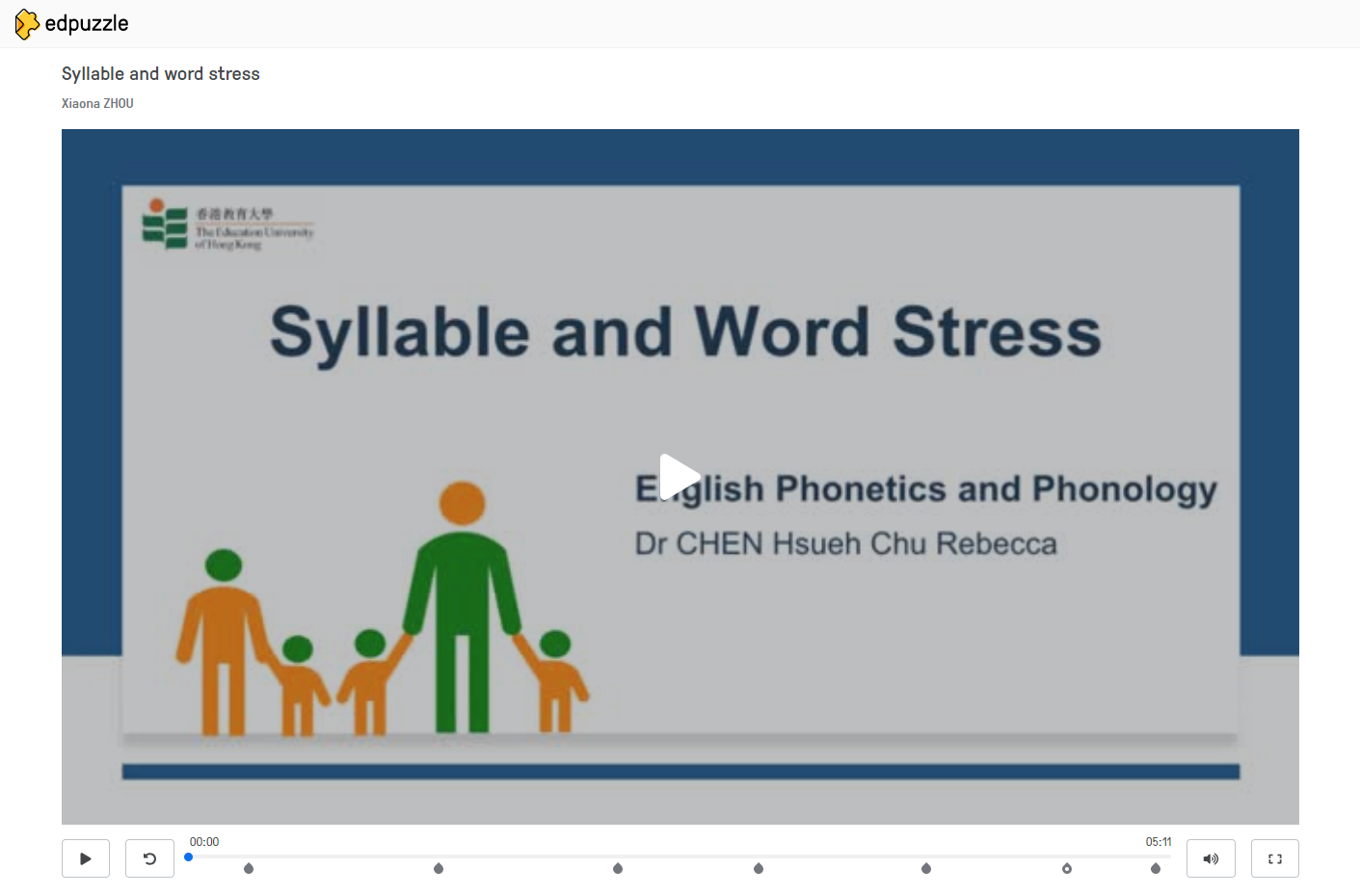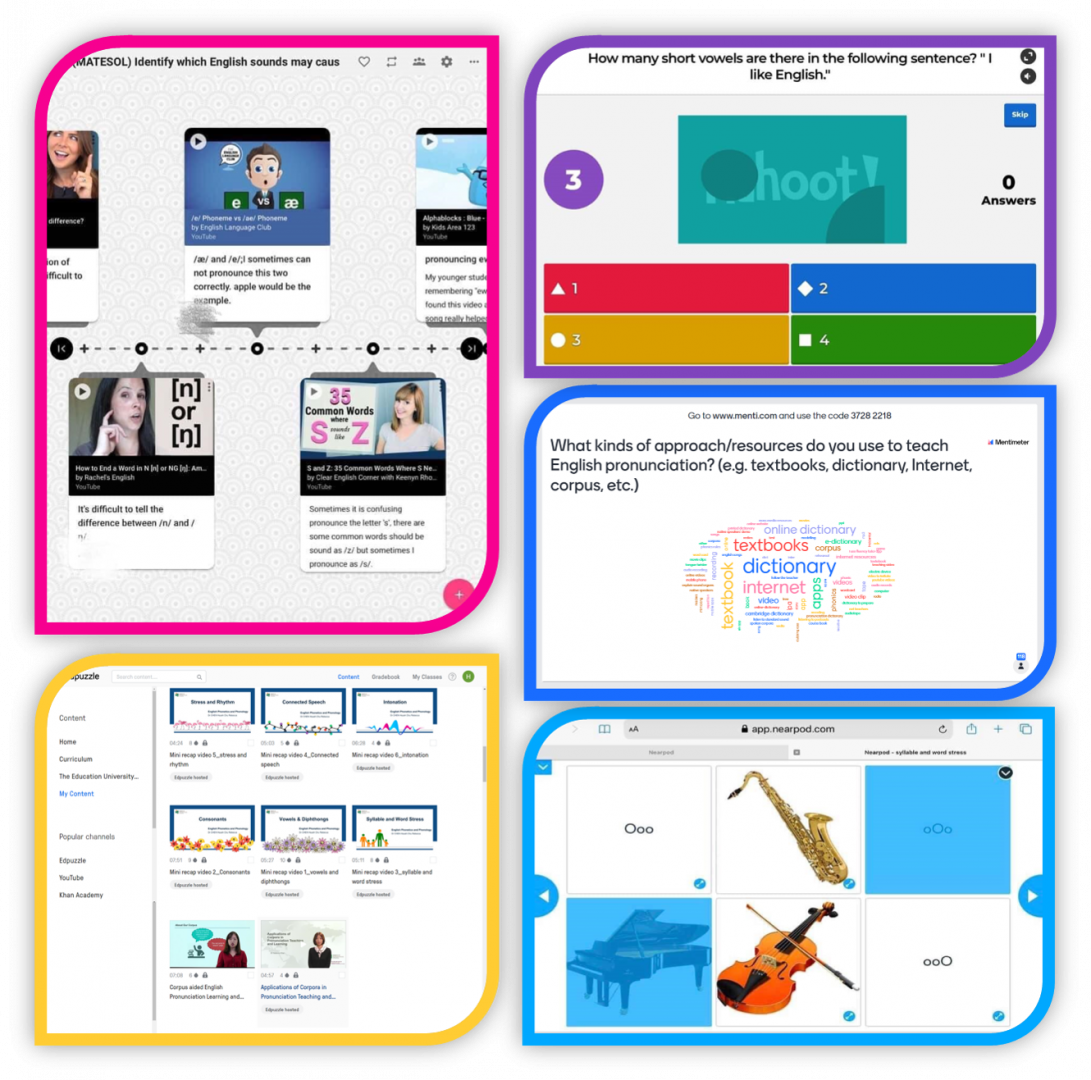
Dr Chen Hsueh Chu
CLE
Online Lessons for <English Phonetics and Phonology>:
My Learning Journey
This course enables pre-service teachers to develop their knowledge of the English sound system, by examining its segmental and supra-segmental features. They also discuss the pedagogical treatment of phonetics and phonology in the TESOL context. In semester 2, 2021-22, five e-tools were selected to help build up effective online teacher-learner collaboration and enhance teacher supervision.
English Phonetics and Pronunciation
Effective Communication
e-Teaching Package
Course Context
Teaching Mode: Blended Teaching
Core e-Resources: Edpuzzle, Nearpod, Padlet, Mentimeter, Kahoot
![]() Edpuzzle is a platform on which teacher users can use to make videos for the course content. Teacher users can also add questions on the video and written feedback to the questions can also be provided.
Edpuzzle is a platform on which teacher users can use to make videos for the course content. Teacher users can also add questions on the video and written feedback to the questions can also be provided.
![]() Nearpod helps customize lessons with assessments and check learners’ understanding of the content knowledge. Different types of resources can be uploaded to the platform for the assessment design.
Nearpod helps customize lessons with assessments and check learners’ understanding of the content knowledge. Different types of resources can be uploaded to the platform for the assessment design.
![]()
![]() Padlet and Mentimeter are platforms on which teacher users can collect learners’ opinions on a certain topic and learners can share their work with each other.
Padlet and Mentimeter are platforms on which teacher users can collect learners’ opinions on a certain topic and learners can share their work with each other.
![]() Kahoot is a game-based learning platform on which learners can play and compete with their peers.
Kahoot is a game-based learning platform on which learners can play and compete with their peers.
Research Results
Enhancement of Subject Knowledge
The application of the five e-tools was effective in helping the preservice teachers consolidate their subject knowledge of phonetics.
Preservice teachers’ error rates on English vowels and consonants slightly decreased after receiving the online lessons, but their performance on English word stress showed no improvement.
Teacher Supervision and Teacher-Student Interaction
Preservice teachers claimed that the combination of the five e-tools helped enhance class interaction, teacher feedback, and teacher supervision. However, peer feedback should be further enhanced.
“My teacher provided a lot of oral feedback when we answer questions using different tools. However, more peer feedback should be provided.”
“The e-learning package has made learning interesting and interactive. We can be engaged in the learning process with the help of e-learning package. I will use them in my future teaching.”
Conclusions: Teaching Implications
To develop better and more effective online English phonetics and pronunciation teaching, the teachers should consider the following implications:
- E-tools with different aims and purposes should be combined in online language teaching.
- Oral feedback should be provided after learners finish the online tasks.
- Peer feedback should also be enhanced, and teachers can use the e-tools, such as Flipgrid: (https://info.flipgrid.com/), to encourage peer feedback online.
- More artificial intelligence products could also be integrated into online language teaching.


